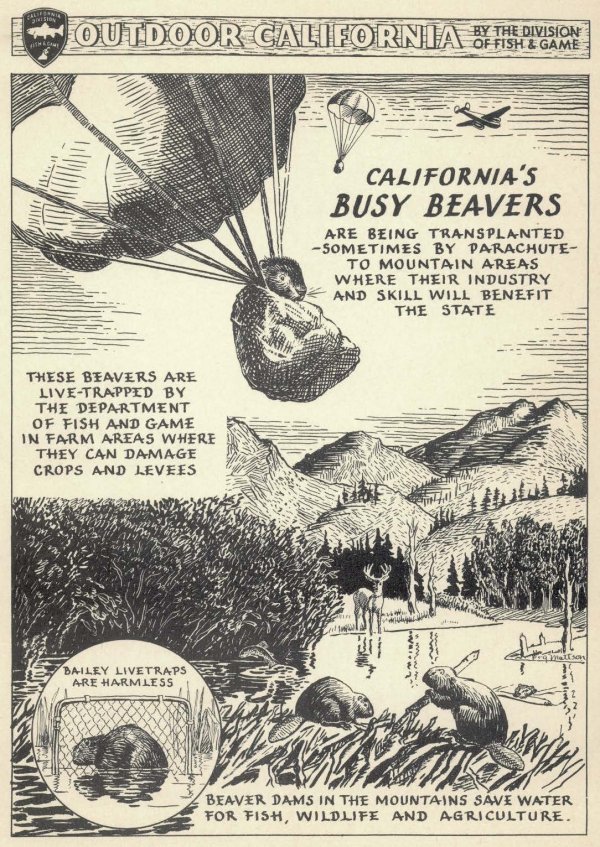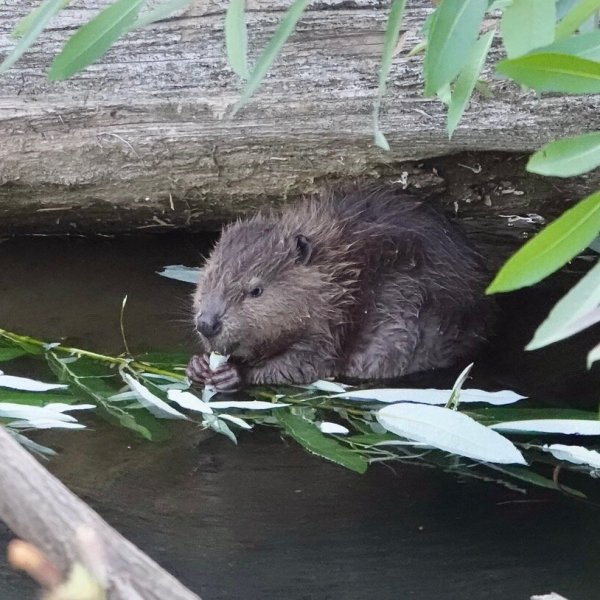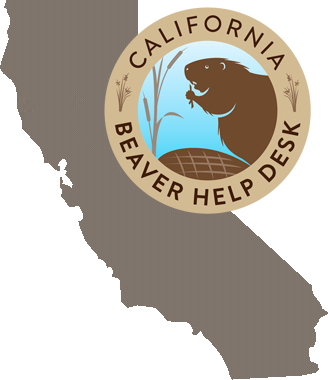Coexistence Histories
Recognizing the fragile status of beaver, the California Division of Fish and Game (as it was called at the time) enacted a law in 1911 to protect the remaining beaver from being killed. Once beaver population numbers started to climb, the law was revised to allow landowners to kill nuisance beavers when suffering damage (or “depredation”) to property. Agriculturalists in the California Delta were concerned about beaver “endangering or destroying the levees or other protective works of any reclamation, levee, or swamp-land districts.” Beaver numbers again decreased, and the ban on killing was reinstated. By the mid-1930s, the landowner’s right to seek a depredation permit was restored for a final time and still stands today.
Meanwhile, from 1923 until 1950, the California Division of Fish and Game recognized the benefit of beaver dams to soil, water, and wildlife conservation and initiated an extensive translocation program to repopulate the state with this helpful watershed engineer. California Fish and Game biologist Donald Tappe wrote in his 1942 status of beaver report that “it is now understood that soil erosion and shortage of water in some places resulted from the destruction of the beavers which formerly built, and kept in repair, dams on the upper reaches of many streams.”
In response, a total of 1,221 beaver were live-trapped and delivered to watersheds across the state and were even dropped from airplanes into the El Dorado National Forest using boxes with parachutes attached! Some of our beaver colonies today descend from those transplanted during translocation programs.

In 2023, the first beaver translocation in nearly 75 years was carried out by the CDFW Beaver Restoration Program and the Maidu Summit Consortium at Tásmam Koyóm!
Recent Changes to Beaver Policy in California
From 2019 to 2024, major beaver policy changes have taken place at the state level. Learn about these changes and how they encourage beaver coexistence statewide.
Wildlife Protection Act
- In 2019, recreational and commercial beaver trapping were outlawed with the Wildlife Protection Act.
California Department of Fish and Wildlife Webpage
- In 2022, CDFW made significant changes to how they represent beaver on their website, launching a new webpage on International Beaver Day (April 7th) that acknowledges that beaver are native to California and worthy of conservation. The site also provides a comprehensive list of coexistence resources, including the OAEC WATER Institute’s beaver stewardship guidebook.
New Depredation Guidelines
- In June 2023, non-lethal beaver management got a significant boost with CDFW’s release of new beaver depredation guidelines. Drafted in response to a petition submitted to the Fish and Game Commission in 2019 by the Occidental Arts & Ecology Center, The Environmental Protection Information Center, the Northcoast Environmental Center, and the Center for Biological Diversity, to improve CDFW’s approach, this new guidance ensures that the state will first determine whether or not listed endangered and threatened species will be impacted and require landowners to carry out coexistence methods before issuing a permit to kill “nuisance” beaver.
Beaver Restoration Program and Management Plan
- In 2023, the Governor approved a budget that created a new CDFW-led Beaver Restoration Program and funded 12 positions for CDFW’s human-wildlife conflicts office, two staff per region. This watershed moment ushered in a whole new era of state-supported beaver coexistence and process-based restoration.
- Then, in 2024, funding was cut for newly hired CDFW human–wildlife conflict staff.
- That same year, CDFW allocated funds from the Nature Based Solutions Grant Program to cover the cost of beaver damage deterrence.
- In 2025 and 2026, a Beaver Management Plan will be created in consultation with the Technical Advisory Group and input from the general public.
- For specifics on the current state laws and regulations that pertain to beaver, go to the CDFW page.

The California Beaver Help Desk is a partnership between the WATER Institute at Occidental Arts & Ecology Center, the Beaver Institute, and the California Department of Fish and Wildlife, whose Nature Based Solutions: Wetlands and Mountain Meadows Grant Program makes this work possible. If you are experiencing conflict with beaver on the land you manage and would like to pursue free technical assistance, please click below to apply.


